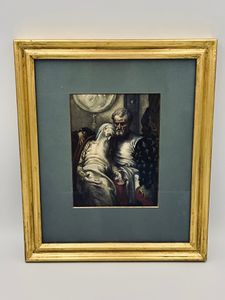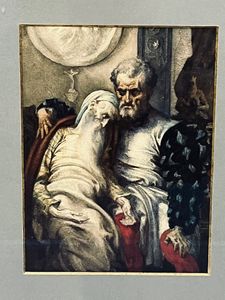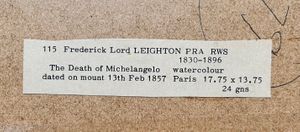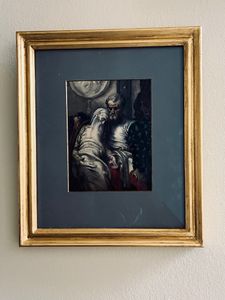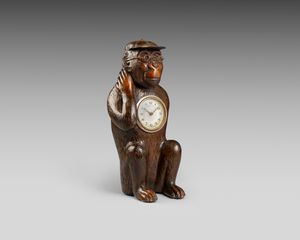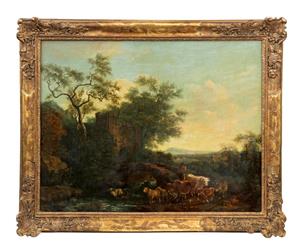Frederick Lord Leighton PRA RWS
19th century watercolour in a gilt frame painted by Frederic Lord Leighton 1830 - 1896
Bearing a label on the back board of the frame.
115 Frederick Lord Leighton PRA RWS
1830-1896
The Death of Michelangelo dated on mount 13th Feb 1857. Paris
Watercolour 17.75 x 13.75
24 gns
Frederic Leighton, 1st Baron Leighton, PRA (3 December 1830 – 25 January 1896), known as Sir Frederic Leighton between 1878 and 1896, was a British Victorian painter, draughtsman, and sculptor. His works depicted historical, biblical, and classical subject matter in an academic style. His paintings were enormously popular, and expensive, during his lifetime, but fell out of critical favour for many decades in the early 20th century.
Leighton was the bearer of the shortest-lived peerage in history; after only one day his hereditary peerage became extinct upon his death.
Frederic, Lord Leighton of Stretton PRA, RWS, HRCA, HRSW 1830 – 1896
This fine watercolour is of Michael Angelo Nursing his Dying Servant
Inscribed and dated on the original backing sheet ‘13th Feb 1857 Paris’ labelled 7 x 5 ¼ inches.
Provenance Maas Gallery- London.
Literature:
Keren Rosa Hammerschlag, Frederic Leighton: Death Morality, Resurrection, Ashgate Publishing Ltd,
p 57-59
Information:
Leighton painted his heroes in intimate association with one another: Cimabue leads Giotto by the hand in Cimabue’s Madonna (1853-5), and Donatello gently hold Brunelleschi’s hand in The Death of Brunelleschi (1852) These large early paintings illustrate the narrative of Western Art as set out by Vasari, an unbroken chain of genius succeeded by genius. In this watercolour of 1857, however, Leighton chose a different, intimate subject from Vasari: the death of Urbino, [Michelangelo’s] servant, or rather, as he may be called, and as he had been, his “companion”…[I]n this, Urbino’s last illness, old as he was, [Michelangelo] nursed him and slept in his clothes at night to watch over him’ (Vasari, Lives, vol IX,81). This tender, expressive watercolour, constructed like a deposition, appears to have been an early idea for the life size oil painting he painted in 1862, but it is the humanity of Michelangelo, rather than his genius, that interests Leighton. From letters, we know that Leighton was aiming at unity and simplicity of composition. From this watercolour, and from other sketches for the picture in Leighton House compared to the final oil version, it is evident that sensitivity Leighton showed working on paper could be eclipsed by his finish in oil colours.
Condition
Very good
United Kingdom
Watercolour




 Back
Back
